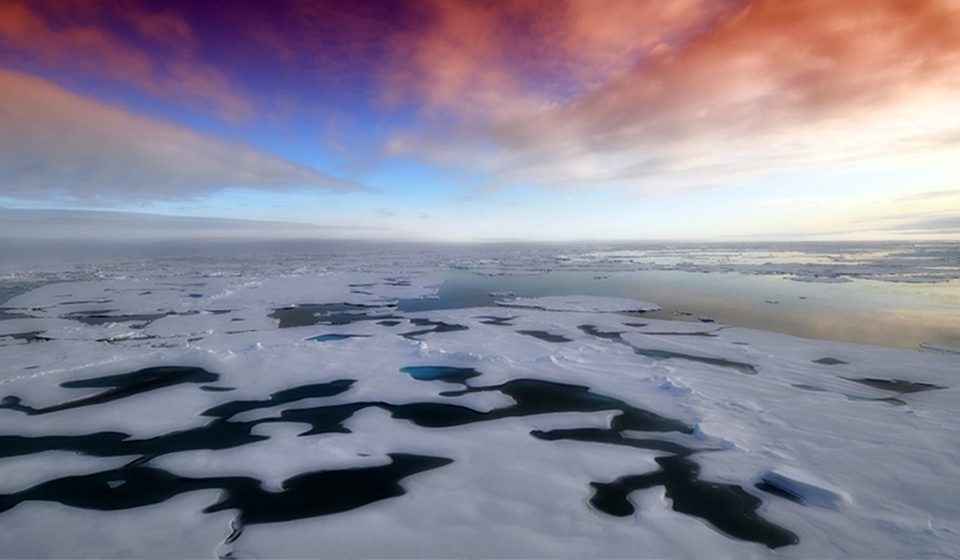Momentum

On Thin Ice
A study co-published by University of Dayton physicist Ivan Sudakov offers a model to better predict the effects of climate change on Arctic sea ice. The discovery, which was published in the New Journal of Physics and gained attention from Scientific American, Physics World and WIRED, could improve climate models for predicting ice loss in the Arctic.
The interdisciplinary study found a relationship between the patterns formed by pools of water from melting sea ice and the arrangement of atoms in magnetic materials. Using the Ising statistical physics model, which simulates the basic physics of ferromagnetic materials, the researchers were able to accurately replicate the melting of Arctic sea ice, using just one real-world measurement.
"It is the next important application of the Ising model itself and shows the universality of physics laws," said Sudakov, who specializes in mathematical modeling of physical and living systems. "It doesn't matter where you apply this model — superconductors or melt ponds."
Invented in 1920, the Ising model shows how natural systems can behave in related ways, such as showing phase transitions between solid, liquid and gaseous states of matter. It also has applications in the fields of neuroscience and socio-economics.
The two-dimensional Ising model consists of individual atoms arranged in a square-lattice grid, with the direction of their magnetic spins either aligned or anti-aligned with the direction of a uniform applied magnetic field. Each atom is then in either a "spin up" or "spin down" state, and is assumed to interact only with its four nearest neighbors — potentially changing the spin of adjacent atoms. This creates patches of atoms within the grid with all of their spins in the same direction.
While snow and ice reflect most of the sunlight on Arctic sea ice, melt ponds absorb and transmit that solar energy — impacting the areas of ice that surround them, much like the interaction between magnetized atoms in the Ising model.
"When the melting begins there is a horizontal heat transfer from one area of sea ice to the next, influencing expansion," Sudakov explained. "When you are melting, you need to release your heat, so you transfer it to your partner."
Solar reflectance and transmittance of the sea ice cover are key parameters in climate modeling, so the Ising model for Arctic melt ponds could help climate scientists better predict the loss of sea ice.
To help further global research efforts in Arctic climate change, Sudakov was awarded an AI for Earth grant from Microsoft. The grant provides machine learning tools and cloud computing services to accelerate his work on an algorithm to identify tundra lakes in satellite images of land surfaces using image segmentation. The process involves dividing a visual input into segments to simplify image analysis.
Tundra lakes are key components of the Arctic climate system because they represent a source of methane to the atmosphere, and they change shape and increase in size as permafrost thaws. Sudakov's work develops a novel and independent approach to image segmentation of tundra lakes using deep neural learning for future goals such as the estimation of greenhouse gas flux from permafrost surface, the detection of tundra lakes erosion, and identification of potential disruption of infrastructure on permafrost.
The one-year grant provides Microsoft services, consulting and support, including Microsoft Azure cloud computing credits. Using Microsoft Azure with this project will help reduce computer programming time because many processes are determined and automated.

University of Dayton physicist Ivan Sudakov

